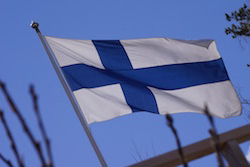DNA and Sonera have completed their network sharing programme, which now covers 15 percent of Finland’s population, across the north and east of the country.
The eighteen month project has now connected more than 760,000 Finns in some of the most sparsely populated parts of the country.
The project covers 2G, 3G and LTE network equipment and spectrum, although both operators will continue to differentiate themselves through service provision. A joint venture, Finnish Shared Network Ltd, will run the network.
Antti Jokinen, CEO of Finnish Shared Network, said: “By combining the frequencies and resources of two operators, we were able to build a 4G network that is twice as fast as would otherwise have been possible. Coverage improved not only with 4G equipment but also with 2G and 3G equipment.”
Within densely populated LTE areas, consumers can benefit from speeds of up to 450MBps through Category 9 devices. In lesser populated areas, they can achieve speeds of 150MBps.
Work first began with a pilot project in Kuusamo in spring 2015. Both operators said the area was selected because of its problematic terrain and operating environment.
In total, 1,700 base stations have been built across Kuusamp, Lapland, Kainuu, Savo and North and South Karelia.
Jokinen added: “Although we have now completed the construction phase, which covered half of Finland, the work will continue. We will maintain and develop the network even in the future.”
While network sharing programmes are common across Europe, competition authorities have been exploring whether they harm the market.



